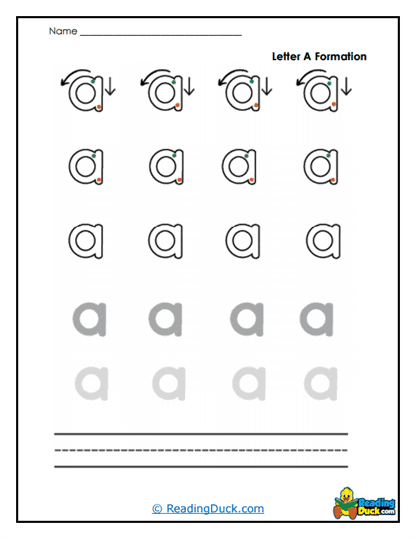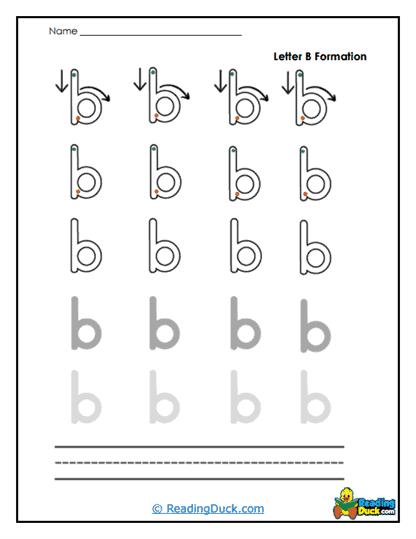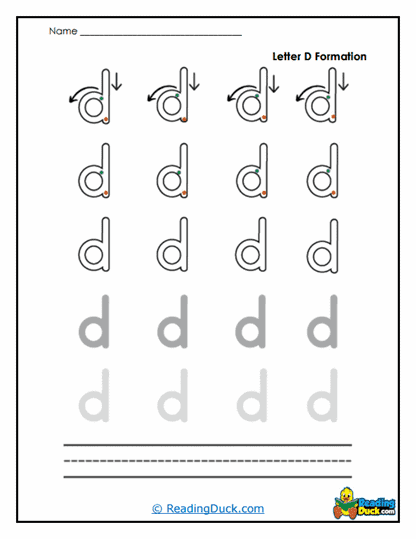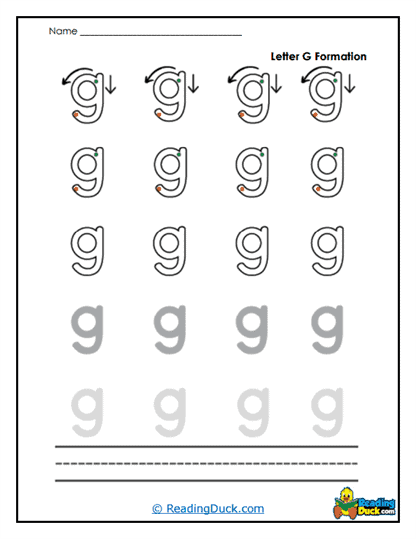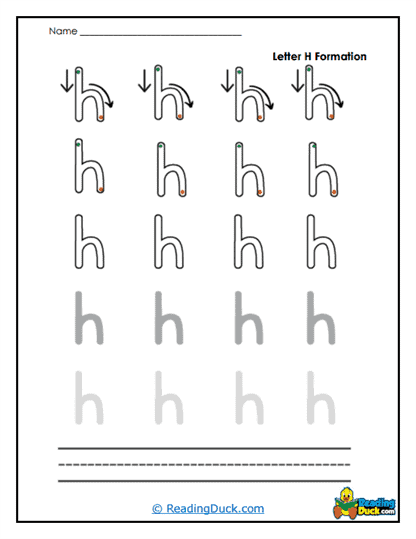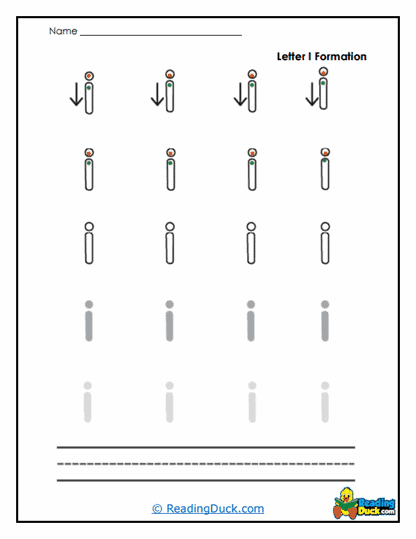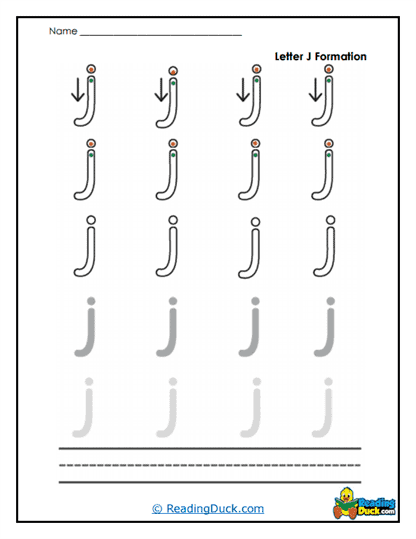Forming Letters Worksheets
About Our Forming Letters Worksheets
Our Forming Letters Worksheets collection is a comprehensive tool designed to help young learners develop the essential skills necessary for forming letters correctly. Falling under the Handwriting category within the Skills section, these worksheets provide a structured approach to teaching letter formation, guiding students through the process of writing both uppercase and lowercase letters. The collection focuses on helping students refine their pencil control, hand-eye coordination, and fine motor skills, all of which are key components in developing legible and fluid handwriting. These worksheets are available in a convenient PDF format, making it easy to view, download, and print for classroom or home use. Additionally, each worksheet includes a downloadable answer key, offering educators and parents a simple way to track progress and provide constructive feedback.
What is Letter Formation? A Detailed Examination
Letter formation refers to the process of writing each letter of the alphabet with correct strokes, orientation, and spacing. It is one of the foundational skills children need to master as they begin their handwriting journey. Proper letter formation is crucial for developing legible handwriting, which plays an important role in both communication and academic success.
Breaking Down Letter Formation:
- Correct Strokes: Each letter of the alphabet has a specific pattern of strokes that dictate how it should be written. For example, an uppercase "A" is formed by creating two diagonal lines and a horizontal crossbar in the center, while a lowercase "a" starts with a round loop followed by a vertical stroke. Learning the correct sequence of strokes ensures that students can write letters efficiently and neatly.
- Letter Size and Proportion: In addition to stroke direction, letter formation involves learning the appropriate size and proportion for each letter. This means students must understand the difference between uppercase and lowercase letters, as well as how to balance them in relation to one another on the writing line.
- Consistency and Spacing: Forming letters consistently is another important aspect of letter formation. Consistency means that the letters are similar in size and shape each time they are written, while spacing refers to the even distance maintained between each letter and word. Mastering these skills ensures that students' writing is legible and easy to read.
Types of Letters to Practice:
- Uppercase Letters: Uppercase letters are typically larger and simpler in form, making them an excellent starting point for students learning to form letters. These letters generally begin with straight lines and are less complex than lowercase letters, providing a solid foundation for students just beginning to develop their handwriting skills.
- Lowercase Letters: Lowercase letters, though smaller and sometimes more intricate, are the next step in letter formation practice. These letters often involve loops and curves, requiring greater precision and control. Learning to form lowercase letters properly is essential for developing the ability to write fluently and efficiently.
Benefits of Proper Letter Formation:
- Improved Legibility: When students learn to form letters correctly, their handwriting becomes more legible, making it easier for others to read their written work. This clarity is essential for effective communication in both academic and everyday situations.
- Faster Writing Speed: As students become more proficient in forming letters, their writing speed naturally increases. This is particularly important in academic contexts, where students need to take notes or complete written assignments within a set time.
- Reduced Fatigue: Using the proper strokes and techniques in letter formation reduces strain on the hand and wrist, allowing students to write for longer periods without experiencing discomfort or fatigue.
How These Worksheets Support Letter Formation
The Forming Letters Worksheets are designed to provide young learners with the structure and practice they need to master letter formation. Through repetition, guidance, and attention to detail, these worksheets ensure that students build strong foundational skills in handwriting.
Key Features of the Worksheets:
- Visual Guidance: Each worksheet offers clear visual models of both uppercase and lowercase letters. Students are provided with a visual reference for how each letter should be formed, making it easier to replicate the strokes and shapes on their own.
- Step-by-Step Practice: The worksheets follow a step-by-step approach, breaking down the formation of each letter into manageable steps. This helps students focus on mastering the individual components of each letter, such as the starting point, direction of strokes, and appropriate pressure.
- Consistent Repetition: The worksheets are designed to allow ample repetition, giving students the opportunity to practice each letter multiple times. Repeated practice helps develop the muscle memory necessary for automatic and accurate letter formation, building confidence as students progress.
- Controlled Practice for Pencil Grip: These worksheets also play an important role in reinforcing proper pencil grip and control, two essential elements of good handwriting. By focusing on specific letter strokes, students practice holding the pencil correctly and applying consistent pressure, which contributes to smoother, more controlled writing.
Providing Feedback for Growth:
- Built-In Evaluation: With the inclusion of downloadable answer keys, educators and parents can easily review students' progress. This allows for personalized feedback, helping students understand areas of improvement and celebrate their successes in forming letters correctly.
The Role of Letter Formation in Early Literacy Development
Mastering letter formation is a critical aspect of early literacy development, directly influencing a child’s ability to read, write, and communicate effectively. Strong handwriting skills lay the foundation for academic success and help students engage with written language in a meaningful way.
Connecting Handwriting to Reading Skills:
- Letter Recognition: Learning to form letters correctly helps students recognize and differentiate between various letters more easily. This skill is crucial for reading fluency, as students need to quickly identify letters and their associated sounds to decode words.
- Phonemic Awareness: As students write each letter, they often reinforce their understanding of phonics, linking the visual representation of a letter to its sound. This connection between writing and phonemic awareness supports both reading and spelling skills.
Strengthening Writing and Communication:
- Writing Fluency: As students become more comfortable with letter formation, they are able to write with greater fluency and speed. This fluency allows them to focus on the content of their writing rather than the mechanics of forming each letter.
- Confidence in Communication: When students feel confident in their handwriting, they are more likely to engage in writing activities, whether for academic purposes or personal expression. Mastery of letter formation opens the door to more advanced writing tasks, such as composing sentences, paragraphs, and stories.
Additional Activities to Reinforce Letter Formation Skills
To reinforce the skills learned through the Forming Letters Worksheets, educators and parents can introduce complementary activities that encourage further handwriting practice. These activities provide opportunities for students to apply their letter formation skills in meaningful ways.
Supplemental Practice Ideas:
- Tracing and Copying Sentences: After mastering individual letters, students can move on to tracing and copying short sentences. This helps them practice writing in context, developing their ability to form letters within words and sentences while maintaining proper spacing and alignment.
- Handwriting Journals: Encourage students to keep a daily journal where they write short entries, focusing on neat and consistent letter formation. This provides regular practice and allows students to track their improvement over time.
- Creative Writing Prompts: Incorporate fun creative writing prompts that inspire students to write in complete sentences using the letters they’ve learned. This not only reinforces their letter formation skills but also fosters creativity and writing fluency.
- Letter Formation Games: For younger learners, letter formation can be reinforced through games, such as forming letters with clay or tracing letters in sand. These hands-on activities help develop fine motor skills and make the learning process more interactive and engaging.
Appropriate Grade Levels:
- Kindergarten to First Grade: The Forming Letters Worksheets are ideal for kindergarten and first-grade students, as this is the period when most children begin learning to form letters. However, these worksheets can also be used with older students who may need additional practice with handwriting or are learning to write for the first time.
The Practical Importance of Letter Formation in Students’ Lives
Mastering letter formation is a vital skill that has lasting benefits for students both academically and personally. Beyond the classroom, good handwriting contributes to clear communication, self-expression, and confidence in written work.
Long-Term Academic and Personal Benefits:
- Foundation for Academic Success: Strong handwriting skills are critical for academic performance, particularly in tasks that require writing, such as note-taking, tests, and essays. Students who are proficient in letter formation are more likely to succeed in these areas, as they can focus on content rather than the physical act of writing.
- Effective Communication: Whether writing notes, letters, or essays, the ability to form letters clearly and legibly ensures that students' written messages are understood by others. This skill is valuable in both academic settings and everyday life.
- Increased Confidence: As students master the skill of letter formation, they gain confidence in their ability to write clearly and effectively. This confidence extends to other areas of learning, encouraging greater participation in writing-related activities.
In conclusion, our Forming Letters Worksheets offer a structured, engaging way for young learners to develop their handwriting skills. By providing guided practice, repetition, and feedback, these worksheets help students master the fundamentals of letter formation, laying the foundation for future academic success and confident written communication.
